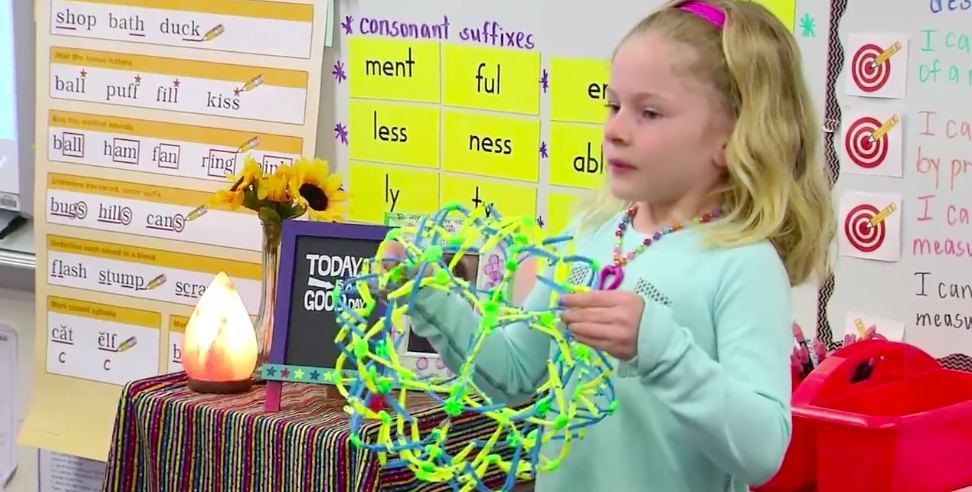
|
Join us for our LIVE REMOTE "Yoga & Mindfulness in the Classroom" Training on June 12th! . Sign Up Now!
|

Of all the aspects of a well-rounded yoga practice, breath is the most essential. Yoga is defined as “yoke” or “unite” and generally refers to the union between body, mind, and spirit. Imagine the breath (in yoga, called prana) as the thread, the essential life force energy, that ties these three elements together. Breath is the mechanism that sustains life. But even more importantly, it allows us to feel connected and whole, and ultimately establishes our physical and mental well-being.
Take a moment to sit and breathe quietly. Notice your ability to slow and deepen your breath. Feel your belly rise, your ribs expand out to the sides, the slight lift under your collarbone. Exhale fully, hugging your collarbone and ribs into your heart and pulling your belly muscles back to your spine. Of all the physiological systems in the body, breathing is the only one we can consciously control. And this remarkable gift of having the ability to regulate our own breathing allows us to manipulate our ability to respond and adapt and even alter our state of mind. All it takes is attention and practice.
From early childhood onward, we develop an arsenal of bad habits – including improper breathing. The breath becomes shallow, tending to engage the ribs and shoulders rather than the entire torso. In fact, we typically only use about 25% of our lung capacity. Although this partial breath may be enough to sustain the body, it often leads to a multitude of problems, including sleep issues, poor focus, low energy, reduced endurance and strength, headaches, sluggish bodily functions, diminished fine motor control and chronic anxiety. As adults, many of us understand the value of a good breath but often fail to consider how much children need the same benefits. And yet parents and teachers alike will tell you they see children struggle with the aforementioned issues every day.
Consider this. One good breath will allow a child to relax mentally and physically. One good breath will teach a child to pause before committing to her words and actions. One good breath will help a child release his anger and approach difficult situations with a clear mind. One good breath will help a child gather the courage to take a calculated risk, whether it’s trying something different or making a new friend. One good breath will improve a child’s focus so that she can perform better at school, on the ball field, and at home. One good breath will remind a child to smile, to forgive, to play, to love, to live. If one good breath will help a child to achieve all of this, imagine what a lifetime of good breaths will do. The “Let’s Breathe” Yoga 4 Classrooms Activity Cards category includes nine incredible breathing techniques to share with your students. The scripts on the back make them easy to implement and your students are sure to love the uniqueness they each offer. We find that once a student learns all of the breathing techniques, they can identify which one they need throughout the day. What a powerful tool for our students. Let’s Breathe!

We have many videos of the breathing techniques in action, including:
Check them out (and so much more!) on our YouTube channel. Be sure to subscribe!
| Cookie | Duration | Description |
|---|---|---|
| cookielawinfo-checkbox-analytics | 11 months | This cookie is set by GDPR Cookie Consent plugin. The cookie is used to store the user consent for the cookies in the category "Analytics". |
| cookielawinfo-checkbox-functional | 11 months | The cookie is set by GDPR cookie consent to record the user consent for the cookies in the category "Functional". |
| cookielawinfo-checkbox-necessary | 11 months | This cookie is set by GDPR Cookie Consent plugin. The cookies is used to store the user consent for the cookies in the category "Necessary". |
| cookielawinfo-checkbox-others | 11 months | This cookie is set by GDPR Cookie Consent plugin. The cookie is used to store the user consent for the cookies in the category "Other. |
| cookielawinfo-checkbox-performance | 11 months | This cookie is set by GDPR Cookie Consent plugin. The cookie is used to store the user consent for the cookies in the category "Performance". |
| viewed_cookie_policy | 11 months | The cookie is set by the GDPR Cookie Consent plugin and is used to store whether or not user has consented to the use of cookies. It does not store any personal data. |